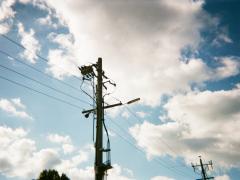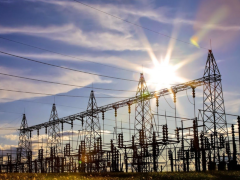by M Kota, J van der Poel, T Terblanche and A Hoekstra, Webber Wentzel
On 2 September 2022, the Minister of Mineral Resources and Energy published proposed amendments to Schedule 2 of the Electricity Regulation Act, 2006 (ERA) for public comment (Government Notice 2459 in Government Gazette 46850) (the Schedule 2 Notice). The Schedule 2 Notice would, once effective, amend the current licensing exemption and registration requirements for trading, generation, transmission and distribution of electricity in terms of the ERA.
In his speech on 25 July 2022, the President announced that the licensing threshold for embedded generation would be removed imminently to encourage increased private investment in electricity generation. This much anticipated removal of the 100 MW threshold is the headline change proposed in the Schedule 2 Notice. In addition to fixing some drafting issues and deleting definitions that are already contained in the ERA, the Schedule 2 Notice also proposes the following noteworthy amendments:
Activities exempt from licencing:
The activities listed in paragraph 2 of Schedule 2 were exempt from licensing and registration with the National Energy Regulator of South Africa (NERSA) under ERA. In brief, the activities listed in this paragraph are, the operation of: (i) a generation facility for back-up electricity; (ii) a generation facility that does not have a point of connection; and (iii) a generation facility with a capacity of 100 kW or less (and has a point of connection).
The Schedule 2 Notice indicates that these activities will continue to be exempt from licensing, but it deletes the current language which provides that these activities are also exempt from registration with NERSA. This deletion, which has not been given any context, makes it unclear whether it is intended that these activities should remain exempt from both licensing and registration or whether they will, on the coming into effect of the proposed amendments, be required to be registered with NERSA. If the intention were to subject the activities listed in paragraph 2 to the NERSA registration requirement, this could have the potentially unintended impact of requiring rooftop solar facilities and large generators for back-up power to be registered with NERSA.
On balance, it seems to us that the better interpretation is that these facilities will, on the language of the Schedule 2 Notice, remain exempt from both licensing and registration requirements. This is because, in terms of section 9(1) of ERA, the Minister must specifically determine which activities are subject to registration, and this could not simply be done by default. Accordingly, silence on whether a particular activity is subject to registration would mean that such activity is not subject to registration.
Activities exempt from licensing, but which must comply with the Code and must be registered with NERSA
The exemptions listed in paragraph 3.1 of Schedule 2 were previously limited to the operation of generation facilities with a capacity of no more than 100 MW. Under the Schedule 2 Notice, this 100 MW restriction has been removed and paragraph 3.1 instead applies to generation facilities "of unrestricted capacity". The intended effect of this amendment appears to be that all so-called "embedded generation" facilities, irrespective of capacity, would be exempted from the licensing requirement. However, the proposed amendment does not simply state this. It, instead, uses the odd phrase "unrestricted capacity" to indicate which facilities are exempt. This phrasing could be justifiably criticised for ambiguity, as it could be read as meaning that the only facilities that are exempt are those which do not have any limits on their capacity. Despite the less-than-optimal choice of phrase, a sensible interpretation is that the amendment is intended to simply mean that "any generation facility", irrespective of size or capacity, which meets the criteria in paragraph 3, is exempt from the licensing requirement.
In addition to the above, we note that the removal of the 100 MW restriction also applies where a generation facility supplies electricity to one or more customers by wheeling, as was the case, with the previous exemption.
The Schedule 2 Notice also contains the following proposed changes that are worth noting:
- Connection Agreements will contain the conditions applicable to an end-user customer; references to "energy storage" in paragraph 2.1 and 2.2 will be amended to refer explicitly to "battery storage".
- We note that paragraph 3 still refers to "energy storage", and not just "battery storage". This potentially makes provision for pumped hydro storage, which in our view should be envisaged. However, clarity on the intention here should be provided; and
- The following provision will be added to Schedule 2 (paragraph 3.6): "Save for the licensing requirements, a registered generator shall comply with all applicable legislative and regulatory requirements necessary for the sustained operation of the national interconnected power system." This provision seems to be intended to make it clear that exemption from licensing does not remove the need to comply with the applicable grid codes and any other applicable regulatory requirements.
The greatly anticipated removal of the 100 MW licensing threshold for embedded generation projects is a positive change that will further incentivise private investment in electricity generation and reduce the lead times to commence construction of projects. This, along with other proposed regulatory and legislative changes, should have a positive impact on South Africa's electricity supply crisis. The changes proposed in the Schedule 2 Notice also pave the way for greater private sector participation in a future competitive power market – as foreshadowed in the draft ERA Amendment Bill published earlier this year.
Despite the positive proposed amendments, there are some remaining issues in the current Schedule 2 that are not addressed by the Schedule 2 Notice:
- Under paragraph 3.2, it is unclear whether the reference to "where there is conveyancing of electricity through the transmission or distribution power system" is intended to exclude the operation of distribution lines that are not connected to the grid at all. In this instance, the electricity exported to the purchaser's system would not be conveyed through a transmission or distribution power system. We propose that this be clarified by the DMRE; and,
- A "reseller" under Paragraph 3.5 is defined as a person who purchases electricity from a trading entity to sell it to a customer, but “trading entity” is not defined. It is not clear which sellers of electricity would qualify as trading entities. We propose that this be changed to refer to a "trading licensee".
Interested parties should submit written comments on the proposed amendments by 3 October 2022.
Send your submission to donald.ndobe@dmre.gov.za













